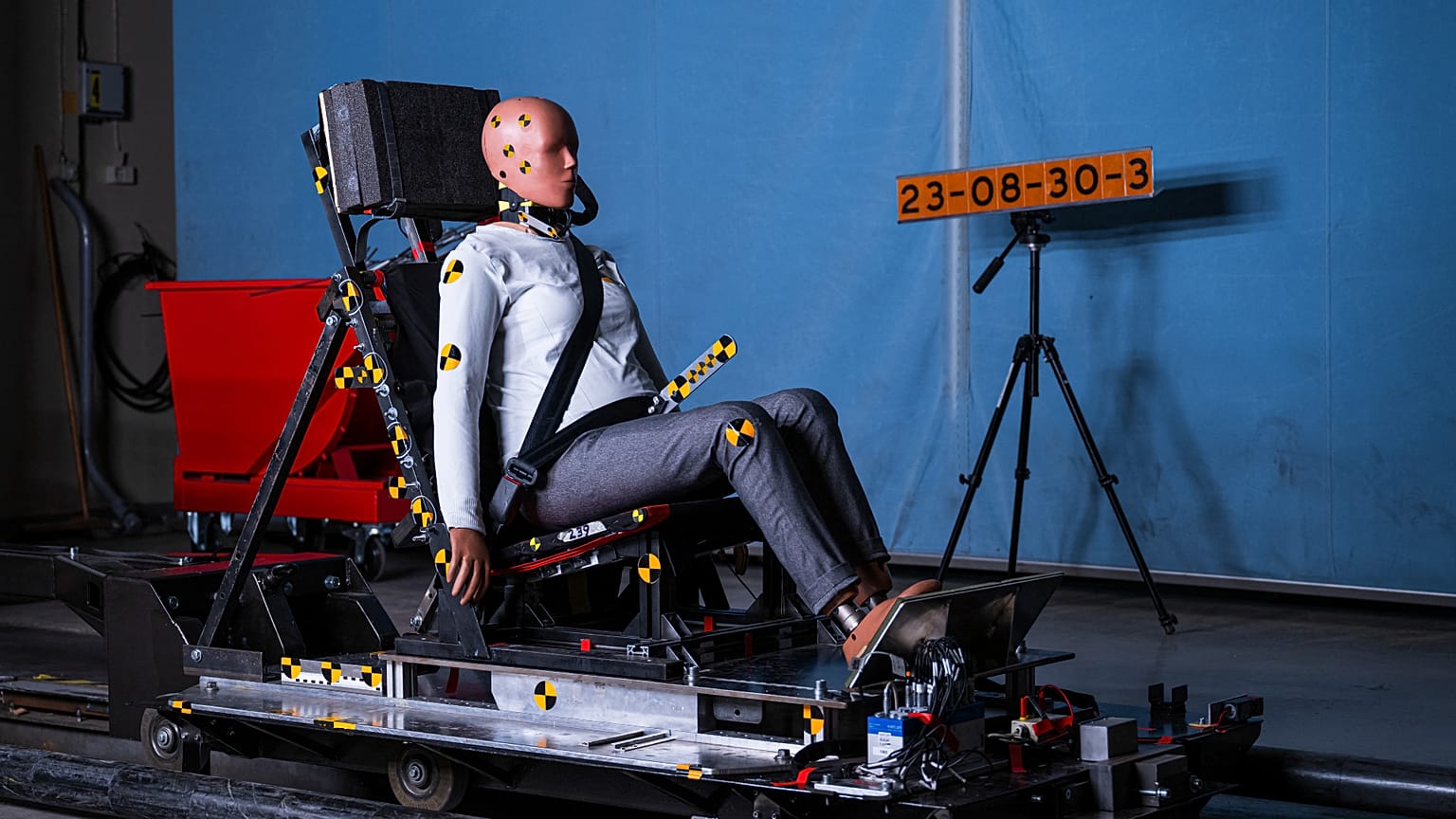Crash test dummies for cars are typically based on average male bodies, which could explain why women are 73 per cent more likely to be injured in frontal road collisions.
Researchers and engineers have just unveiled a prototype of what they hope will lead to safer vehicles for women.
The SET 50F is the first car crash dummy modelled entirely on a female body.
“In the minimum standard that is required for a car to be sold in the regulation, it says you have to use the model of an average male for all the testing full-stop,” Astrid Linder, the director of traffic safety at the Swedish National Road and Transport Research Institute explained.
"Both males and females should be equally represented when we assess the protection of the occupants or the users in the crash. By that, we will have an inclusive assessment, whereas today, it’s exclusive," she added.
In Europe, safety assessments on new vehicles are doled out by the European New Car Assessment Programme (Euro NCAP), a voluntary vehicle safety rating system that is backed by motoring and consumer organisations in several EU countries as well as by the European Commission.
The organisation conducts a variety of vehicle crash tests to assess the risks of frontal, pole and side impacts as well as collisions with pedestrians.
Of the five models Euro NCAP uses to represent adult car users, only one of them, the Hybrid III dummy, is intended to represent a small female occupant. But unlike the SET50F, the model is largely based on the male dummy that has been in use since the 1970s, albeit slightly smaller in size.
Why are women more likely to be injured in car crashes?
In recent years, studies in the US have attempted to shed light on the discrepancy between men and women when it comes to injuries sustained in road collisions.
A 2019 study from the University of Virginia, for example, reported that women were 73 per cent more likely than men to be injured in a car accident.
Another study in 2021 by the Insurance Institute for Highway Safety in the US, suggested that there are a number of factors that could be playing into this statistic.
Their report indicated that women are more likely to drive smaller, lighter cars and more likely than men to be driving the struck vehicle in side-impact and front-into-rear crashes.
In the case of front-to-rear and front-to-side crashes, the striking vehicle has been shown to constitute a lower risk of injury than the struck vehicle.
However, Linder and the team behind SET5OF also believe that crash testing vehicles with dummies that properly account for the female form could lead to the development of safer seats and features for both men and women.
“The muscles in the neck are weaker normally in a woman, so if you compare it with a male dummy, this neck is more flexible and has more movements if you perform exactly the same crash test at the same speed and acceleration, " said Tommy Pettersson, a research engineer on the project.
"The aim, hopefully, is to make it possible to make better seats both for women and men. That’s the reason why we have created one man and one woman," he added.
For more one this story, watch the video in the media player above.


















